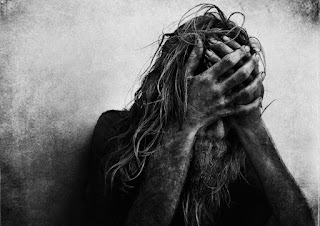Thursday, February 25, 2016
Sunday, February 14, 2016
Monday, February 8, 2016
Advice on Jobs in Concept Art
One of my
three possible pathways for senior studio is concept art for a short story, as
if it were going to be animated as a short film. While researching concept art
I came across an interview with the artist Jonathan Guzi, a recent graduate
from the Fashion Institute of Technology.
His
journey to becoming a concept artist sounds a lot like my journey as an artist.
In the interview, he talks about how he likes to draw and knew that he wanted
to do wasn't just book illustration. He was inspired by watching films like
Lord of the Rings, and movies like that.
Right
now, Jonathan is working at 2K games as an illustrator and concept artist. I
included some of his images below, and a link to the interview.





http://conceptartworld.com/?p=38701
Friday, February 5, 2016
Thursday, February 4, 2016
And I have an arm
So the base structure of the arm is done. Things I have left to do are to print the gears that attach to either side of the elbow. Make the fingers and thumb. And figure out how it will interact (painfully attach) to a human shoulder. Also attach the rotator to the shoulder as it is currently only 50% painted and still separated from the arm (sitting to the left of the shoulder in the photo). Update I have the hand mostly in place idea wise. I need to add a movement system.
Tuesday, February 2, 2016
Doug Rickard & Appropriation
A link to one of the artists I am drawing a lot of references from with the use of appropriated images. I would also like to incorporate screencaps from Google Maps into my project to build off the concept of appropriation. Rickard re-photographs these moments from Google with his own camera and then displays them. Perhaps a method like this is something I can look into with my own repurposing concept.
Lee Jeffries did a series on homeless subjects around the world and used lighting during production as well as post production editing to get the final products. Not really my idea but it is an example of photos that have as much work put into it during production as well as the work put in afterwards. http://leejeffries.500px.com/homeless
Urbex photos for Adrienne
Adrienne (and anyone else that can benefit from this, I suppose), here's
a handful of photos I have from wandering around abandoned
houses/hospitals back in the day. I've got tons, ask me if you want any
more to reference ever.

This semester my work will take one of three directions.

Pathway
One –
A series of medium sized paintings
that react to collections of ordinary objects arranged according to
interrelationships. They will have an underlying mathematical structure like
the work of Richard Ryan. The application of paint will be direct with an
emphasis on contrast of brushstrokes and color similar to the style of Claire
Sherman.
Thanks
to Micheal I was just turned onto the work of still life painter James
Aponovich. I think his paintings resonate with my first two proposals.

Pathway
Two-
One or more large paintings that contain
still life arrangements among figurative, abstract, and landscape elements;
thus altering the context of the still life to suggest dreamscape. I will look
at the work of Georgia O’Keeffe and Rockwell Kent.
Pathway
Three-
A series of small paintings that
show single objects close up to depict an object in a way that is both literal
and abstract. I will look at the flower paintings of Georgia O’Keeffe. I will
use the old master style of oil paintings in which glazes are applied to a
black and white underpainting, or grisaille, like in the work of Dennis Wojtkiewicz.
Monday, February 1, 2016
Imaginative Realism
In acquiescence to your suggestions, I will narrow down my fantasy illustration proposal somewhat. I will be exploring the theme of realism through fantasy. This is still a potential minefield of semantics and oxymorons which I'm going to have to organize into a coherent defense. A very useful aid in this task will be "Imaginative Realism: How to Paint what doesn't Exist" by James Gurney. This book examines methods of painting the impossible/imaginary in a realistic manner. It isn't a step by step instruction book on how to paint dinosaurs or some such nonsense, rather it takes a look at how to "stretch the imaginative muscles". James Gurney's artwork is super pooper dooper relevant to my proposal, and I will be delving into his long running blog for further research: http://gurneyjourney.blogspot.com/2009/09/why-i-wrote-imaginative-realism.html
Artwork below is by James Gurney



Artwork below is by James Gurney

Subscribe to:
Posts (Atom)









